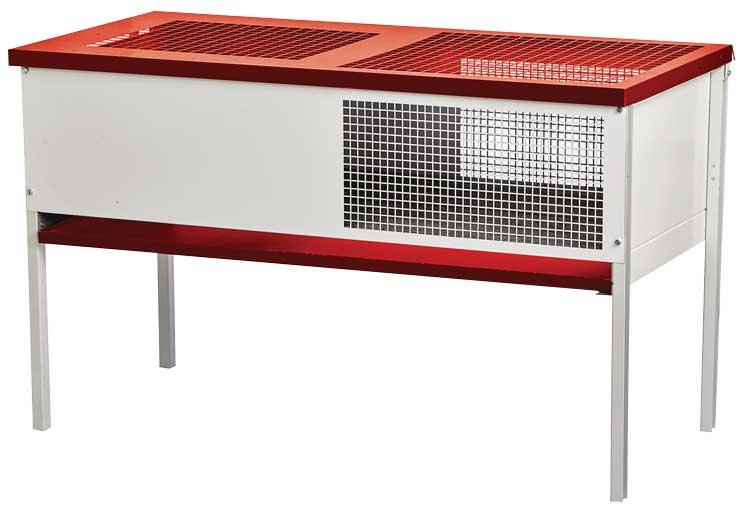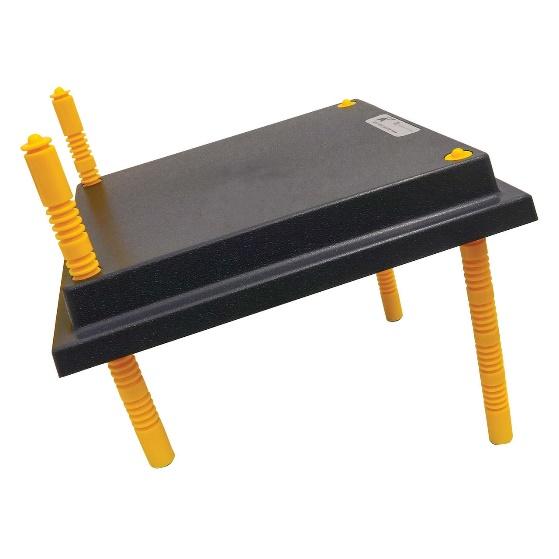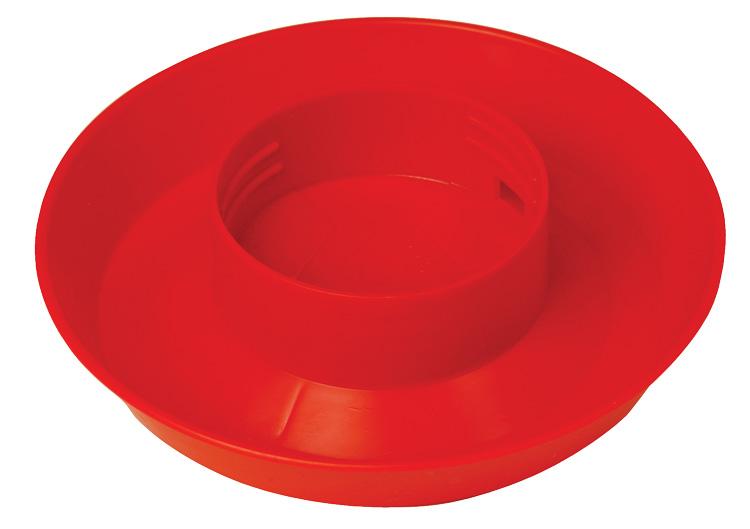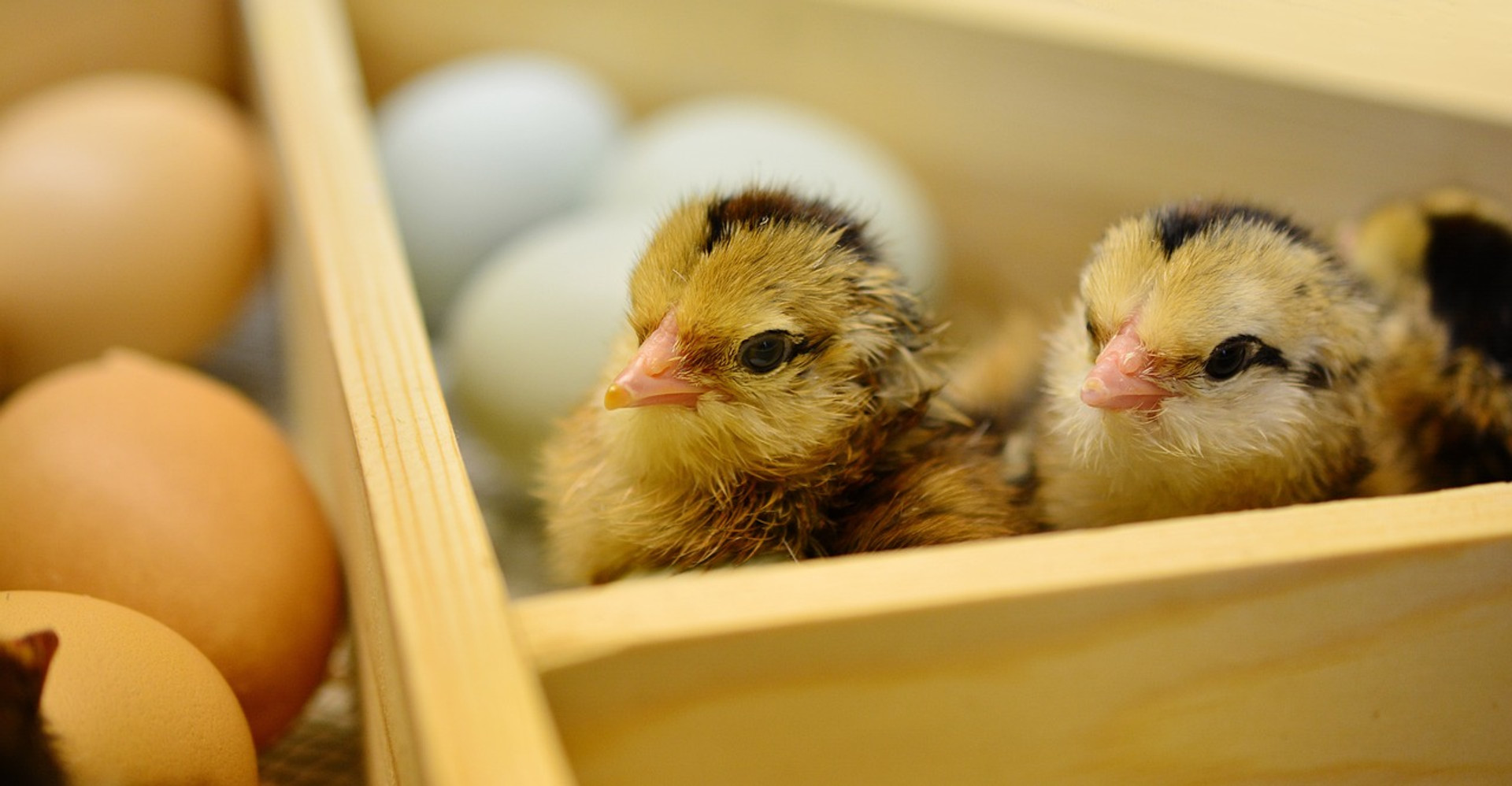Ordering Chicks Months Before They Hatch
Whether you’re just getting started in the lively world of poultry or looking to add to your flock, ordering chicks is an exciting process with feathered rewards. Let’s break down the hassle-free process so you can get your chicks to their new home.
What Kind of Chicks Should I Get?
When deciding what kind of chicks to get, consider your goals for raising poultry, such as egg production, meat, show, or simply as pets. Here's a quick rundown of popular birds to get:
Chickens
When we think about raising backyard flocks, chickens are usually the first fowl that come to mind.Chickens are a popular choice due to their versatility in providing both meat and eggs. Choosing the best chickens for your needs depends on what you're looking for in raising birds.
Is your focus on meat production, egg-laying capabilities, or simply having a feathery friend with beautiful plumage for companionship? Either way, each chicken breed offers unique characteristics that can cater to your specific requirements.
Ducks
Ducks are known for being robust and hardy. They often require less medical care than chickens and produce larger, richer eggs. They’re also excellent foragers and less susceptible to diseases common to chickens.
Light ducks, in particular, are better layers and less costly to keep, making them ideal for egg production. They require water but not as much as often believed, and a plastic water tub can suffice for their bathing needs.
Bantams
Bantams, especially bantam chickens, are a popular choice for those with limited space, thanks to their small size and efficient use of coop space. They're also known for their friendly nature, so they’re great as pets, especially for families with children. Bantams consume less food than their larger counterparts, and despite their miniature size, they’re hardy birds that can live as long as standard chickens
However, they do require protection from predators and cold weather due to their small stature. Bantams can coexist with larger fowls if introduced properly, which adds some diversity and interest to any flock.
|
Feathered Fact: Bantams have a higher metabolism compared to larger chickens, making them more active and curious explorers of their environment. |
Turkeys
Turkeys are known for being cleaner and exhibit higher intelligence compared to chickens. Homegrown turkeys also provide meat and stock that is richer and more flavorful than what you might find in stores.
When raised alongside chickens from a young age, turkeys can integrate well into the flock. However, since turkeys are larger, they’ll need more space and feed than chickens or ducks. Male turkeys, or toms, might also exhibit aggressive behavior during their mating season—something you’ll need to look out for.

Geese
Geese are some of the best domesticated foragers. They’re low maintenance compared to other fowl and are also quite intelligent. Their meat is excellent, and though they don’t produce as many eggs, goose eggs are large (about 3–4 chicken eggs), rich, and creamy.
Geese do require some space to roam and access to water for swimming, which means they might not be suitable for very small properties. They can also be quite loud, and their protective nature can sometimes turn into aggression, especially during the breeding season.
Guineas
Guineafowl are a great addition to any flock because they help control pests and are low maintenance. They’re good at finding their own food, like insects and ticks, which can save you money on feed. Guineafowl produce tasty meat and eggs that some people prefer over chicken.
Guineafowl are better free-ranged—however, they like to roam and may not always stay where you want them to. They’re also known for being noisy, making them unsuitable for residential areas. They prefer sleeping in trees, so getting them to use a coop might take some work.
Peacocks
Peacocks are known for their stunning plumage and majestic tail feathers, making them a spectacular addition to any ornamental garden or estate. Though not commonly chosen for their meat or eggs, their vibrant colors and elegant appearance can enhance the aesthetic appeal of your surroundings.
Beyond their beauty, they are also known for their loud calls, which can be a consideration for potential owners. Peacocks require spacious environments to thrive, as they enjoy roaming and showcasing their splendid feathers.
|
Garden Guardians: Peacocks are not just about beauty; their presence can deter garden pests and small animals, serving as a natural, vibrant guard for your green spaces. |
Pheasants
Pheasants are another popular choice for adding color and variety to a backyard flock. They are appreciated for their beautiful feathers and can also be raised for their meat, which is considered a delicacy in many cuisines.
Pheasants require a habitat that mimics their natural surroundings, with plenty of cover and space to roam. They are more independent by nature and can be somewhat challenging to domesticate, requiring owners to have a bit more experience in poultry keeping.
Chukars
Chukars, a type of partridge, are valued for both their striking appearance and their hardiness. They adapt well to various environments and can be kept for both ornamental purposes and hunting.
These birds have a lively and robust nature, making them an excellent choice for those looking to add activity and energy to their aviaries. Chukars are also known for their distinctive call, which is a series of quick, rhythmic notes that add to the auditory landscape of any outdoor space where they are kept.
Quail
Quail, particularly the Coturnix variety, are small, easy-to-manage, dual-purpose birds. Though their eggs are recognizably small, they’re prolific egg layers, providing a steady supply of eggs. Their meat is also tender and flavorful. They’re a practical choice for small-scale poultry enthusiasts.
In addition to their productivity, quail can be an educational asset for families, teaching younger members about the responsibilities of care and the cycles of life. Their quiet demeanor and minimal space requirements make them well-suited to a variety of settings, from rural farms to urban gardens.
Space Requirements for Poultry
Different types of poultry require varying amounts of space, both indoors for shelter and outdoors for foraging and exercise. The space requirements prevent overcrowding, which can lead to health issues and aggressive behavior.
The table below outlines the minimum space requirements for different types of poultry commonly raised in backyard settings or on small farms.
|
Poultry Type |
Space Per Bird (Indoors) |
Outdoor Space Needed |
|
Chickens |
2–3 sq ft |
8–10 sq ft |
|
Ducks |
3–4 sq ft |
10–15 sq ft |
|
Bantams |
1–2 sq ft |
5–7 sq ft |
|
Turkeys |
6–8 sq ft |
20–25 sq ft |
|
Geese |
6–8 sq ft |
20–30 sq ft |
|
Guineafowl |
2–3 sq ft |
10–15 sq ft |
|
Peacocks |
8–10 sq ft |
80–100 sq ft |
|
Pheasants |
5–6 sq ft |
25–30 sq ft |
|
Chukars |
2–3 sq ft |
10–12 sq ft |
|
Quail |
1 sq ft |
5 sq ft |
When Should I Order My Birds?
The early bird gets the…bird, so order as soon as possible! When ordering baby chicks, popular breeds sell out quickly, and once they are sold out, they are gone for the season. No matter where you choose to purchase from, you should plan to order early.
It’s important to consider the seasonality of bird availability when picking poultry breeds. We suggest referencing the chart below and using it as a guide of when to order birds and expect their availability, based on bird species and the seasonality of breeds.

How Do I Order My Birds?
Ordering live birds is easier than you think. You can order chicks and adult birds online or place your order with our knowledgeable, friendly staff over the phone at (800) 720-1134. Once we receive your bird order, you will receive a notice of what to expect next in the process via the email or phone number provided when you ordered.
Because we aim for your chicks to arrive immediately after they hatch, we assign you the earliest available date for the combination of birds ordered, ensuring the quickest turnaround and healthy, happy birds upon arrival.
How Will My Birds Be Shipped?
When your baby chicks are ready, live birds will ship via USPS Priority Mail on their scheduled ship date. Your order will arrive at your local post office approximately 48 hours after shipping. USPS will call you when your order arrives. Be sure to pick up your chicks from the post office in a timely manner.
What Should I Have Prepared for My Birds?
If this is your first time raising birds, make sure you have all of your equipment in place before your birds arrive. Even if you’re raising birds DIY-style, you’ll need to have the following ready:
Brooder
A brooder is an enclosed space used to raise baby birds and keep them contained. A properly sized brooder will allow room for the baby chicks to move and includes a heat source, feeder, and waterer, along with bedding material at the bottom.

Bedding Material
Baby chicks need bedding under them in the brooder to act as nesting material and as a way to swap out material to remove droppings and spilled water or feed. Some options for chick bedding include wood shavings, medium to course-grade sand (construction sand), and shredded paper.
Heat Source
Young chicks need help regulating their body temperature. A radiant heat plate or similar source of warmth in the brooder helps keep your chicks warm and toasty.

Thermometer
Get a thermometer and have a way to monitor the temperature in your brooder. Baby chicks during their first week should be kept at 95°–90°F, with temperatures gradually lowering each week.

Feeder
Your chicks will need unhindered access to a chick starter feed. A chick feeder base and jar will help you customize to your preference and feed capacity needs for your chicks.

Waterer
Chicks will need access to clean water, and waterers deliver this on demand. Make sure to pick the base and jar that are best matched to the number of chicks you’re raising.

Feed
Your chicks will need nutrition such as Pen Pals® ADM Chicken Starter/Grower and additional supplements like Stromberg's Peck N' Grow to give your birds a strong start to living a healthy life.
Tips on Ordering Birds
Check your local ordinance before purchasing chicks. Restrictions on the number of chickens you can keep or whether roosters are permitted may apply. In most cases, you’ll get to pick the sex of your chicks.
We offer females, males, and what is called a straight run. A straight run (unsexed) offers both male and female chicks and is kind of a grab bag of what quantity of each you will get. It’s a great option for those who are not worried about the gender of their birds and are prepared for any combination of roosters and hens.
Frequently Asked Questions
Are the chicks safe when they’re shipped via USPS?
Here at Stromberg’s, we ensure the health of every chick and other live birds we ship for the first 48 hours after delivery. Once an order for live birds or eggs is placed, the seller will schedule a ship date and notify you via email. Adult birds are shipped via Express Mail, while baby chicks and chicken eggs are sent via Priority Mail.
The birds or eggs will then be shipped directly to your local post office, where you'll need to pick them up. Should any issues arise within this period, please let us know as soon as possible so we can help you.
Can I specify the gender of the chicks I order?
We offer both unsexed and all-female chick options. Choosing unsexed chicks typically results in a mix of roosters and hens, often close to a 50/50 split. After they’ve hatched, some birds begin to show their gender differences within five weeks.
For those interested in a guaranteed mix of both genders across multiple flocks, consider getting one batch of all-female chicks and one unsexed batch. This strategy ensures you'll have both roosters and hens across at least three flocks, providing a diverse and balanced poultry environment.
Can I order hatching chicks or hatching eggs in advance?
Yes, you can place orders for hatching chicks or hatching eggs well before the expected hatch date. This advanced ordering allows hatcheries to ensure they meet the demand for specific breeds, especially exotic breeds that might be in limited supply.
When you order, specify the hatch day you're aiming for, and the hatchery will schedule the incubation period accordingly.
How do I incubate eggs from my own flock to hatch chicks?
To hatch chicks from your own eggs, you'll need a reliable incubator that can maintain the correct temperature and humidity levels throughout the incubation period. Start by selecting fertile eggs and placing them in the incubator, making sure to turn them regularly until a few days before the expected hatch date.
What is the incubation period for chicken eggs, and how can I ensure they hatch healthy chicks?
The typical incubation period for chicken eggs is about 21 days. To ensure a successful hatch, maintain the incubator at the recommended temperature and humidity levels, and turn the eggs several times a day to mimic the natural actions of a brooding hen. Avoid opening the incubator frequently to maintain stable conditions. Using eggs from healthy, well-nourished chickens increases the chances of hatching healthy chicks.
Are there special considerations for incubating eggs from exotic breeds?
Incubating eggs from exotic breeds often requires specific considerations related to temperature, humidity, and the incubation period, which may differ slightly from more common breeds. Research the particular needs of the exotic breed you're interested in to adjust your incubation practices accordingly. Some exotic breeds might also have a lower hatch rate, so setting realistic expectations and possibly incubating more eggs than the number of chicks you hope to achieve can be wise.
Conclusion
Once you’ve ordered your chicks, the adventure doesn’t stop there! Don’t forget to have all the necessary poultry equipment to raise your chicks into strong, healthy adults. Check out our catalog or shop online for all your poultry supplies and needs as your flock grows up into healthy adult birds.

